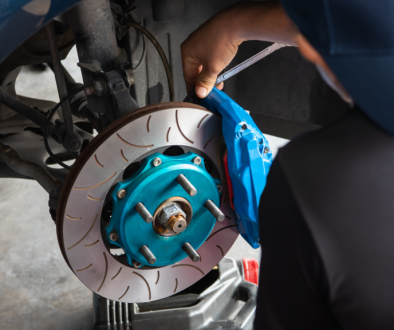Truck overheating is one of the most common issues fleet owners and operators face. Whether you’re managing a fleet of long-haul trucks or local delivery vehicles, understanding the causes of overheating and how to address them can save you from costly repairs, lost productivity, and unexpected downtime. Without proper maintenance, an overheating truck can lead to severe engine damage and even road accidents. That’s why it’s essential to diagnose and fix these issues promptly, as well as prevent them from happening in the future.
In this comprehensive guide, we’ll explore the common causes of truck overheating, provide troubleshooting steps, and offer practical solutions. We’ll also discuss preventative measures to help you keep your trucks running smoothly and avoid costly breakdowns. With a proactive approach to maintenance, you can reduce downtime, increase fleet efficiency, and keep your vehicles on the road for longer periods.
Understanding Truck Overheating: Common Causes
1. Low Coolant Levels
One of the most common reasons for truck overheating is low coolant levels. If the coolant is leaking or hasn’t been topped off in a while, your engine won’t be able to stay cool during operation.
2. Faulty Radiator
The radiator is responsible for cooling the engine by dissipating heat. If the radiator is clogged, leaking, or damaged, it can cause the truck to overheat.
3. Broken Thermostat
A malfunctioning thermostat can cause your truck’s engine to overheat. If it’s stuck in the closed position, coolant will not circulate properly, leading to overheating.
4. Worn-Out Water Pump
The water pump circulates coolant through the engine. If the pump is faulty, it can disrupt coolant flow and cause overheating.
5. Clogged Coolant Hoses
Coolant hoses can become clogged with debris or buildup over time. When hoses are blocked, coolant flow is restricted, leading to overheating.
6. Broken Cooling Fan
The cooling fan pulls air through the radiator to dissipate heat. If the fan malfunctions, airflow to the radiator is reduced, making it harder to cool the engine.
Troubleshooting Truck Overheating: A Step-by-Step Guide
Step 1: Check Coolant Levels
If coolant levels are low, top it off and monitor the temperature gauge. If overheating persists, there may be a leak.
Step 2: Inspect the Radiator
Check for leaks, coolant stains, or debris blocking airflow through the radiator.
Step 3: Examine the Thermostat
Remove the thermostat and test it in hot water. If it doesn’t open, replace it.
Step 4: Test the Water Pump
Observe coolant flow when the engine is running. Irregular flow may indicate a faulty water pump.
Step 5: Inspect Coolant Hoses
Check for blockages, cracks, or leaks in coolant hoses and replace them if necessary.
Step 6: Check the Cooling Fan
Ensure the fan is functioning properly. If it doesn’t turn on, check the fuse, fan motor, and wiring.
How to Fix Overheating Issues: Step-by-Step Solutions
1. Add Coolant or Repair Leaks
If coolant levels are low, refill them. If leaks are present, repair or replace damaged parts.
2. Replace the Radiator
If clogged or leaking, the radiator may need replacement.
3. Replace the Thermostat
A faulty thermostat should be replaced immediately to restore proper coolant flow.
4. Replace the Water Pump
If the water pump isn’t working efficiently, replace it to ensure proper coolant circulation.
5. Clear Blocked Hoses
Flush clogged hoses with water or replace damaged ones.
6. Replace the Cooling Fan
Replace a faulty fan with a new one that matches your truck’s specifications.
Preventing Truck Overheating: Maintenance Tips
1. Regularly Check Coolant Levels
Maintain coolant levels by checking and refilling regularly.
2. Flush the Cooling System
Periodically flush the radiator and cooling system to prevent buildup.
3. Inspect the Radiator
Regularly check for dirt, debris, and damage.
4. Monitor Engine Temperature
Keep an eye on the temperature gauge and address any spikes immediately.
5. Replace Worn Parts
Replace old hoses, thermostats, and water pumps before they fail.
6. Schedule Routine Inspections
Have a professional inspect your cooling system annually.
Case Study: Overheating Issues in a Fleet Truck
A local trucking company had a truck that frequently overheated on long-haul routes. After checking the coolant level, mechanics found a thermostat stuck in the closed position.
By replacing the thermostat and flushing the radiator, the issue was resolved, and the truck operated reliably without further overheating.
Conclusion
Truck overheating can be costly and dangerous, but proper maintenance can prevent breakdowns. Diagnosing and fixing issues early can save time and money.
If you’re unsure of the cause of overheating, consult a professional mechanic for diagnosis and repairs.
Frequently Asked Questions (FAQs)
1. What causes my truck to overheat?
Overheating is commonly caused by low coolant levels, radiator issues, a broken thermostat, a faulty water pump, or clogged hoses.
2. Can I drive my truck with an overheating engine?
No, driving with an overheating engine can cause severe damage. Pull over and address the issue immediately.
3. How often should I check my truck’s cooling system?
Check coolant levels and inspect the system regularly, especially before long trips. Perform a full inspection at least once a year.
4. How do I know if my truck’s radiator is clogged?
Signs include overheating, coolant leaks, or reduced airflow. A professional inspection can confirm if cleaning or replacement is needed.
5. Can I fix a coolant leak myself?
Small leaks can sometimes be sealed, but a mechanic should inspect and properly repair the leak to prevent further damage.




